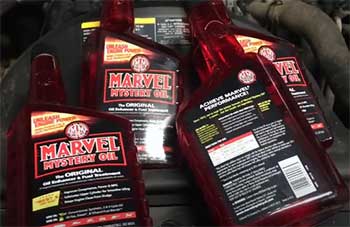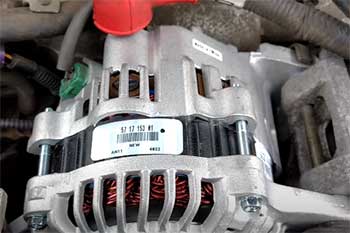Alright, let me sell you on this right out of the gate: if you’re even remotely into tweaking your ride for better performance or just want that slammed look that turns heads, TruHart coilovers deserve your attention.
I’ve been down the rabbit hole of suspension upgrades, and these bad boys strike a killer balance between price, quality, and customization. Whether you’re chasing sharper handling or a stance that screams attitude, TruHart’s got your back.
Trust me, after putting them through their paces, I’m convinced they’re a steal for anyone serious about their car. So, why wait? Let’s get into my story with them.
My Journey With TruHart Coilovers

Picture this: I’m rolling up to my garage in my 2017 Honda Civic, tired of the wheel gap mocking me every time I park.
I’d been eyeing coilovers for months, drooling over the idea of dropping my ride and sharpening up the corners.
After some late-night scrolling and a few too many car forum rabbit holes, I landed on TruHart StreetPlus coilovers.
They promised adjustable ride height, decent damping, and a price tag that didn’t make my wallet cry—under $550 shipped. Sold.
The install day was a mix of excitement and chaos.
I’m no pro mechanic, but I’ve turned a wrench or two. With a buddy’s help, we yanked out the stock suspension in about three hours.
The TruHart kit came with everything I needed—springs, shocks, and top mounts—so no scavenging for OEM parts.
Bolting them on felt straightforward, almost too easy for something this transformative. I set the height to about a 2-inch drop, figuring I’d tweak it later.
First drive? Holy smokes. The Civic felt glued to the road, like it finally woke up. Corners I used to baby through became playgrounds—I could feel the difference in how it hugged the turns. The ride was firm, sure, but not spine-shattering.
I took it on a twisty backroad near my place, and the grin on my face was permanent. Over the next few weeks, I played with the damping settings (16 levels, by the way), dialing in a sweet spot between sporty and daily-driver comfy.
It wasn’t perfect—more on that later—but man, I was hooked. This wasn’t just a mod; it was a whole new relationship with my car.
Months in, I’ve logged over 3,000 miles on these coilovers. From city potholes to highway cruises, they’ve held up, and I’ve learned a ton about what they can (and can’t) do. Let me break it down for you—pros, cons, upkeep, and how they stack up against the big dogs.
Buckle up; I’ve got plenty to share.
Pros of TruHart Coilovers
Let’s talk about what makes TruHart coilovers a win in my book. I’ve been running these for a while now, and there’s a lot to love.
- Wallet-Friendly Price Tag

First off, the cost. I paid less than $550 for my StreetPlus set, and for that, you’re getting a fully adjustable system.
Compare that to brands like KW or Bilstein, where you’re easily dropping $1,500 or more.
For me, a guy who loves mods but isn’t swimming in cash, TruHart was a no-brainer.
You get serious bang for your buck—performance that punches way above its weight class.
- Adjustable Everything
The customization is where I really geeked out. Ride height? Twist the collars, and you’re anywhere from a subtle half-inch drop to a slammed 3.5 inches. I settled on 2 inches—low enough to look dope, high enough to dodge speed bumps.
Then there’s the damping—16 levels of it. I started stiff for some canyon carving, then softened it up for daily commutes. It’s like having two suspensions in one. You can tweak it to match your mood or your roads.
- Handling That Wows
Here’s where TruHart shines: handling. My Civic went from a grocery-getter to a corner-carving beast. The monotube design keeps things stable, and I swear I can feel the road better than ever. There’s less body roll, tighter turns, and a confidence I didn’t have with stock springs.
I took it to a local autocross event, and while I’m no pro driver, the car felt planted. You’ll notice it too—your steering gets sharper, and the car just listens better.
- Solid Build Quality
I was skeptical about durability at this price, but TruHart’s held up. The materials feel sturdy—steel bodies, aluminum mounts—and after months of abuse (potholes included), there’s no weird noises or leaks.
They’re rebuildable too, which is clutch if you’re in it for the long haul. I haven’t needed to yet, but knowing I can refresh them down the line gives me peace of mind.
- Easy Install Vibes
If you’ve got basic tools and some patience, you’re golden. The StreetPlus kit was a direct bolt-on for my Civic—no cutting, no cursing (well, not much). The top mounts made it plug-and-play compared to cheaper kits that reuse OEM hats.
I had mine on in half a day, and that’s with a beer break. You don’t need a lift or a PhD in mechanics—just a jack, stands, and some elbow grease.
Cons of TruHart Coilovers
Alright, let’s keep it real—TruHart isn’t flawless. I’ve hit some bumps (figuratively and literally) that you should know about.
- Ride Can Get Rough
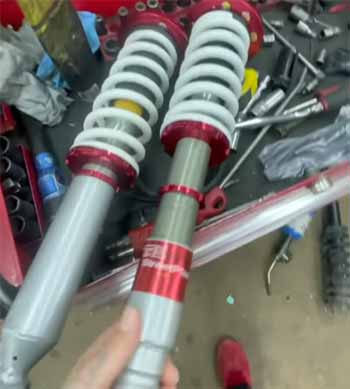
That firm handling?
It comes at a cost.
On smooth roads, it’s a dream, but hit a pothole or cracked pavement, and you’ll feel it in your bones.
I live in a city with so-so streets, and some days, it’s like my Civic’s rattling my fillings loose.
If you’re all about plush comfort, these might test your patience.
I’ve adjusted the damping to soften it, but there’s only so much you can do.
- Not Winter-Ready
Here’s a biggie if you’re in a snowy spot: corrosion. TruHart doesn’t advertise heavy rust protection, and I’ve heard horror stories from buddies up north about salt eating cheaper coilovers alive.
I’m in a mild climate, so I’ve dodged that bullet, but if you’re battling blizzards, you might need to baby these or look elsewhere. Maintenance is key here—more on that soon.
- Noise Creeps In
After a few months, I noticed some creaks and clunks, especially when it’s cold. It’s not dealbreaker-level, but it’s annoying. I traced it to the top mounts settling in, and a quick tighten-up helped.
Still, compared to pricier setups with pillowball mounts, TruHart’s budget roots show. You might hear your suspension chatting more than you’d like.
- Limited High-End Performance
Don’t get me wrong—they’re awesome for the street and light track use. But if you’re pushing hardcore laps at a circuit, TruHart starts to sweat.
The damping isn’t as refined as, say, a Tein Flex Z or Ohlins setup. I felt it at that autocross—under heavy stress, they’re good, not great. For casual enthusiasts like me, it’s fine, but hardcore racers might want more.
Maintenance Tips For TruHart Coilovers
Keeping these coilovers happy isn’t rocket science, but it takes some TLC. Here’s what I’ve learned to keep them running smooth.
- Clean Them Regularly
Road grime is the enemy. Salt, dirt, mud—they’ll chew up the threads and seals if you let them. I hit mine with a hose every couple of weeks, especially after rain.
Get in there with a brush around the adjusters and shock bodies. Dry them off with a rag so rust doesn’t sneak in. Takes 20 minutes, saves you headaches.
- Lube the Threads
Those height adjustment collars? They’ll seize up if you ignore them. I grab some silicone spray or anti-seize and coat the threads every few months. It keeps them spinning smooth when I want to tweak the drop.
Learned this the hard way when I tried adjusting after a year—took some muscle to break them free.
- Check for Leaks
Keep an eye on the shocks. A little oil seep means trouble. I inspect mine monthly, looking under the car for damp spots. So far, so good, but if you catch a leak early, you can rebuild them before they’re toast.
Don’t sleep on this—blown shocks ruin the party fast.
- Tighten Everything
Vibration loves to loosen bolts. I check the top mounts and lower bolts every oil change (about 5,000 miles). A quick wrench turn keeps the creaks at bay.
Pro tip: use a torque wrench to spec—overtightening can strip threads, and I’m not about that life.
- Seasonal Adjustments
If your weather swings like mine, tweak the setup. I raise the car a bit in winter to clear slush, then drop it back for summer cruising. Takes an hour with a jack and some patience.
Keeps the ride practical and protects the undercarriage from scraping.
TruHart Vs. The Big Names: How They Stack Up?
Alright, let’s pit TruHart coilovers against some worthy rivals—Rev9, BC Racing, and Megan Racing. I’ve dug into what makes each tick, ridden in cars rocking these setups, and chatted with gearheads to give you the straight scoop.
Here’s how TruHart stacks up, brand by brand.
- TruHart Vs. Rev9 Coilovers
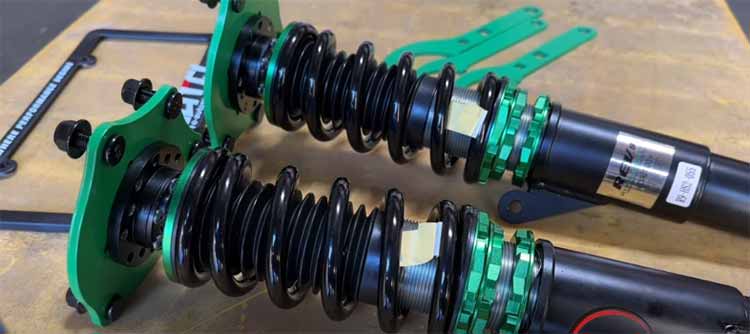
First up, Rev9. These two are like cousins—both budget-friendly, both aimed at enthusiasts who want a drop without draining their savings. I snagged my TruHart StreetPlus for around $550, while Rev9’s Power Hyper Street kit runs about $500-$600.
Price-wise, it’s a toss-up. Rev9 offers 32-way damping compared to TruHart’s 16, so you’ve got more wiggle room to fine-tune the ride. I rode in a buddy’s Rev9-equipped Miata, and it soaked up bumps a bit better—smoother on rough roads.
But TruHart’s monotube design feels snappier in corners, giving my Civic a planted edge Rev9 couldn’t match. Build-wise, they’re neck and neck—decent, not bulletproof. For me, TruHart wins on handling; Rev9 takes comfort. Your call depends on what you crave more.
- TruHart Vs. BC Racing Coilovers
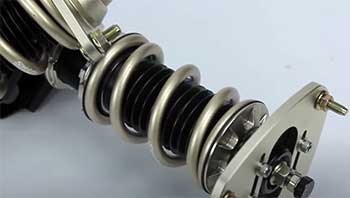
Next, BC Racing—a step up in the game. BC’s BR Series starts around $1,000, nearly double TruHart’s cost, and you feel that premium vibe.
Their 30-way damping blows TruHart’s 16 levels out of the water—my friend’s BC’d Subaru WRX let him dial in everything from cushy to track-stiff.
BC also throws in custom spring rates if you ask, while TruHart’s a one-size-fits-most deal.
I’ll give TruHart props for keeping up in street handling—my Civic corners like a champ—but BC’s refinement shines on long drives or hard laps.
Durability?
BC’s got better rust protection for snowy climates; TruHart’s a gamble there. If you’ve got the cash and want versatility, BC’s your pick. I’m happy saving $500 with TruHart for daily fun, though.
- TruHart Vs. Megan Racing Coilovers

Finally, Megan Racing—another budget brawler.
Priced around $600-$700, Megan’s Street Series is close to TruHart territory.
Both are stiff, sporty, and adjustable, but Megan ups the ante with 32-way damping and pillowball mounts on some kits.
I test-drove a 350Z with Megans, and the adjustability was wild—soft for cruising, firm for tearing up backroads.
TruHart’s simpler top mounts creak a bit more, and its 16-way damping feels less granular.
Handling’s a draw—both grip hard—but Megan’s noisier, and I’ve heard their shocks wear faster. TruHart’s held strong for me over 3,000 miles, no leaks or drama.
If you love tweaking every detail, Megan’s got the edge; I prefer TruHart’s straightforward vibe and slightly better longevity.
In the end, TruHart’s the scrappy champ for budget builds. Rev9’s comfier, BC’s more polished, and Megan’s a tuning nerd’s dream—but none match TruHart’s value for the dollar. I’m sticking with mine, grinning every mile.
What’s your ride begging for?
Frequently Asked Questions (FAQ)
TruHart’s a U.S.-based brand, but the manufacturing happens overseas, likely in Asia—think Taiwan or China. They don’t shout about it, but that’s standard for budget-friendly gear. I’ve had no quality gripes, so wherever they’re forged, it’s working.
Oh, absolutely. My Civic’s a testament—tighter turns, less roll, more control. The monotube setup and stiffer springs make a night-and-day difference over stock. You’ll feel it the second you hit a corner.
Yup, the StreetPlus models I’ve got offer 16 levels of adjustable damping. It’s not as fancy as 30-way setups, but it’s plenty for tweaking between cushy and sporty. Dial it to your taste—you won’t be stuck with one feel.
Nope, no Hardrace bushings here. TruHart sticks with their own spec—standard rubber or poly bushings, depending on the kit. They’re solid for the price, but Hardrace’s beefier stuff isn’t part of the package. I haven’t missed it, though.
Conclusion: TruHart Coilovers Are Worth It
So, here’s my pitch: if you’re itching to transform your ride without breaking the bank, TruHart coilovers are calling your name. They’ve given my Civic a new soul—lower, sharper, and way more fun—for a price that leaves room for other mods.
Sure, they’ve got quirks, but the value’s unreal. I say go for it, slap them on, and enjoy the ride. You won’t regret it.
